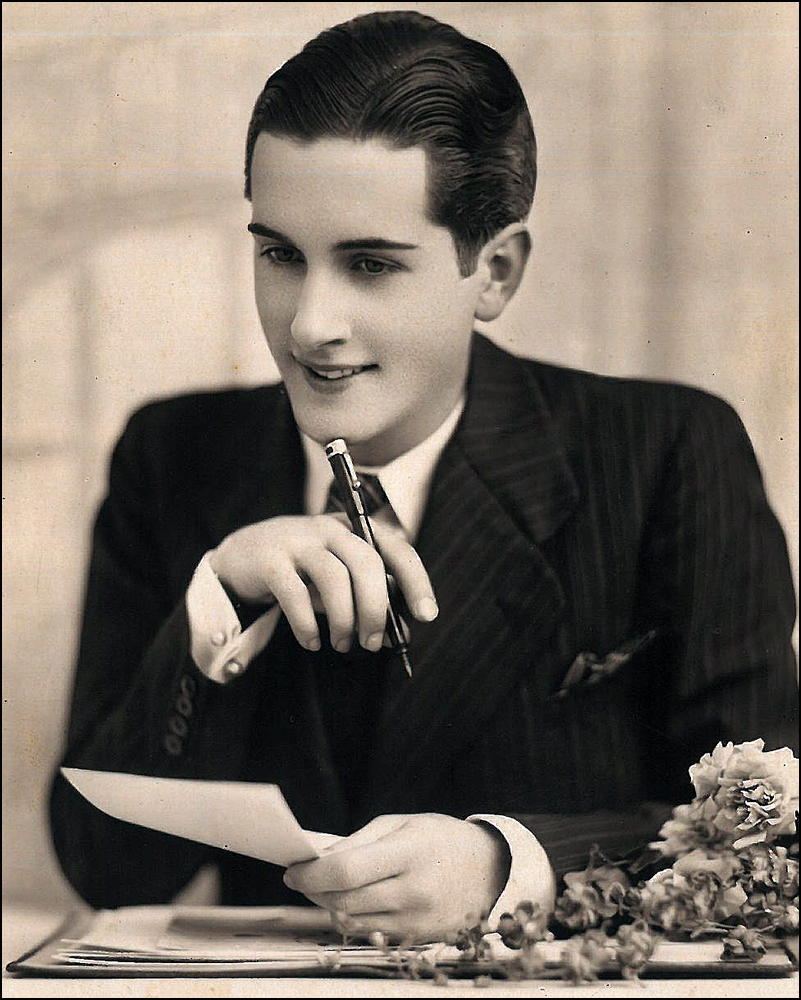Paris: Tête-à-Tête with Venus and Photographer Maurice Sapiro

Venus of the Sea! Esther Williams as Annette Kellerman, Million Dollar Mermaid, 1952 (Image: MovieStillsDB)

Meet Neptune’s Daughter! Annette Kellerman
By Theadora Brack
Gather around, my fellow aquatic history bugs. I’ve got a tale to tell.
After measuring 10,000 women, one Dr. Dudley Sargent announced in 1908 that he had discovered the “perfect specimen of womanhood.” To a T, swimming champ Annette Kellerman possessed the proportions of the Venus de Milo.
“Her measurements almost surpass belief!” he exclaimed, while parading “Neptune’s daughter” past an all-male audience at Harvard. Go figure!
Soon women all over the world began sending their measurements and sepia-toned portraits to local newspapers and competitions, claiming to have proportions even closer to the classical ideal than Kellerman’s.
Because haters are going hate
At least one woman tried put the global rivalry to rest. ‘Though I have very nearly the measurements of Venus de Milo,” she wrote, “I am not at all glad of this. We are living in the 20th century and not the times of Praxiteles. The features of Venus de Milo are not at all those of the perfect beauty. Beauty changes with the centuries.” Ouch.
But she was undoubtedly right. Venus stands 6’7’ and weighs more than a ton!

Venus de Milo, Louvre (Photograph by Maurice Sapiro, 1956)
On the flipside
I, for one, however, think the Venus still looks absolutely fabulous. So grab your black pumps and handbags. In celebration of the upcoming Global Love Day, let’s hotfoot it on over to the Louvre, and spend some face time with the statuesque beauty. Meet me at the Palais Royal-Musée du Louvre Métro Station. And mind the gap!
Sentimental Journey
I’ve got new images, along with a few taken by our own special photographer friend, Maurice Sapiro. While playing the trumpet with the 279th Army Band in Europe in 1956, Maurice documented the streets of France. I’ve said it once, and I’ll say it again. His photographs still crackle, snap and pop.
After I got him on the horn, he set the scene:
“I was lucky enough to be in Europe before the tourist craze. In 1956, I had the Louvre almost to myself. The people that appear in my photo of Venus were the only people in the gallery. It’s a memory so strong, it seems like it was just yesterday, not 60 years ago. At the Louvre, I decided that painting and photography would be a major part of the rest of my life. Even then, I knew nothing in the future could compare with Paris.”
Now, without further adieu, let’s play forward with some homage, shall we?
Here’s the scoop
First, let’s jump in Mr. Peabody’s WABAC Machine and dial ourselves back to the 18th century.
The Greek revival style has already captured Europe’s fancy, especially in France. Classical Greek styling dominates music, architecture, art, and fashion. Illustrated travelogues are being snatched up and bought as quickly as they are written. Globe trekkers and fashion enthusiasts of the day are getting their classical fixes in salons and museums, and for the first time ever, art institutions are attracting visitors from all walks of life.

Globe trekkers are still getting their classical fixes at the Louvre (Image: T. Brack’s archives, 1961)
Live to Tell
But like the ceremonies at today’s Olympic Games, back then every successful museum had to have classical showstoppers to attract the biggest crowds. Although Napoleon hadn’t started off as a hot lover of art, he’d come to consider it a big part of his role as conqueror to “collect” the best from every country he dominated. In fact, Louvre director Dominique-Vivant Denon often joined him in newly acquired territories, sometimes even scooping up masterpieces amidst the smoking ruins while the battles were still taking place. Imagine if eBay had existed back then.
Then came Waterloo, and we all know what that meant. France’s empire went into a tailspin, and her enemies reclaimed more than five thousand stolen works, including the prized Venus de Medici—until then, the toast of the town. “We are still rich,” insisted Louis XVIII in 1816, but that didn’t change the fact that neither his museum nor the nation of France owned a real Venus to call their own any longer—or even a real classical Greek sculpture.

Enter Venus de Milo in 1821, like a divine answer to a prayer (Photograph by T. Brack)
Enter Venus de Milo in 1821, like a divine answer to a prayer. Lost for thousands of years in the underground world of the island of Melos before a local farmer and a French naval officer rediscovered her, she was excavated from deep in the ruins of an ancient Greek gymnasium.
“It really is a very fine masterpiece,” said the enamored king upon her arrival in France. Gazing up at her from his divan-on-wheels, he then issued a royal decree. “The place for it is the Museum of the Louvre. See to it that it is put there immediately!”

That’s right, Johnny Castle. No one puts Venus in a corner! (Photograph by T. Brack)
The prequel
The Venus de Milo (also known in some circles as the “Aphrodite of Melos”) showed up at the Musée du Louvre in the dead of winter, dirt stained and scarred from when her original niche had collapsed some two millennia earlier. Her nose was broken, a chunk of her wavy chignon hair bun was missing. According to some stories, she had been found with arms, but these went missing during a scuffle that erupted when they were loading the boat to bring her to France.
No matter. After all, what use would the Goddess of Love have for arms? She still had her nose, which is a lot more than you can say about most other antique marbles. And what a nose it is! After a thorough cleaning and a hip and foot restoration, she made her debut before the king and world as the epitome of classical Greek beauty. “Venus de Milo’s nose is a joy forever,” one smitten reporter wrote in 1901. That’s right, Johnny. Nobody puts Venus in a corner!

The sweep of her stomach and the weight of her heavily draped hips were purely Hellenistic
Go figure
“I’m a little bit this and a little bit that,” she might have said to her puzzled curators. Her perfectly proportioned head and upper torso—hallmarks of Classical Greece—didn’t jive with the sweep of her stomach or the weight of her heavily draped hips. Those were purely Hellenistic. Hips don’t lie! That’s for sure.
By now, of course, Hellenistic art is no longer considered substandard, and the truth about Venus’s background is out. Despite restoration work and occasional temporary moves due to wars or gallery repairs, her popularity has kept on growing.

I’ll wear what she’s wearing: Secret de Venus, Weil, 1933 (Photograph by T. Brack)
Belle de la salle
By the late 19th century, souvenir postcards of the armless ancient siren were already out-selling those of all the living stage actresses combined. Thousands of replicas made of marble, plaster, plastic, and terra cotta were mass-produced at a conveyor belt-breaking rate and sold, collected and coveted all over the world.
During WWII, while a stand-in plaster lookalike sensibly took her place at the museum, Venus took shelter in several chateaux almost 200 km away in the Loire Valley. In June 1945, Venus—along with her power gal squad, the Mona Lisa and the Winged Victory of Samothrace—returned safely to Paris. There wasn’t a dry eye in the wings. I’m sure of it.
Venus is still the belle of the hall at the Louvre. She receives some eight million visitors a year—or 7,000,988, if you subtract my monthly pilgrimages.
Auguste Rodin 1912 tribute applies equally well today: “You are not a vain and sterile statue, the image of some unreal goddess of the Empyrean. You are a woman, and that is your glory.” Couldn’t have said it better myself.
Thanks for sharing your memories and photographs, Maurice!

MAURICE SAPIRO, PARIS, 1956 (PHOTOGRAPH TAKEN BY HIS TWIN BROTHER, ERWIN)

Venus de Milo (Photograph by Maurice Sapiro, 1956)

Venus de Milo, Louvre (Photograph by Maurice Sapiro, 1956)

Venus de Milo (Photograph by Maurice Sapiro, 1956)

Venus Paparazzi at the Louvre (Photograph by T. Brack)

Ready for her close-up: Venus (Photograph by T. Brack)

Replicas were mass-producedeven—even salt and pepper shakers! (T. Brack’s collection, 1948)
















Fascinating read.
LikeLiked by 1 person
Well, thank you! (And apologies for my delayed response. I was on a work trip.)
Enjoy the week!
Theadora
LikeLike
You can imagine, in those different days, that Dr. Dudley Sargent must have clambered up the Venus de Milo with a tape measure to establish all her dimensions.
I did something similar myself recently, climbing all over a very different ancient public sculpture with a tailor’s tape, for my own nefarious purposes, and got lots of funny looks from passing motorists. It’s embarrassing. At least he was probably on his own.
LikeLiked by 1 person
Oh, I LOVE your story. Great flashback. You used a tailor’s tape? Fabulous! Where did scene take place? Do tell. Any findings? Any photographs?
Yes, do share!
Theadora
LikeLike
I did use a tailor’s tape. It’s all a bit hush hush but I was trying to “weigh” a local 1897 fountain plinth, by breaking it down into a series of discs and hemispheres and establishing the total volume and therefore, knowing the density of the stone it was made of, the weight.
This was part of an ongoing investigation I’m making. It’s by the side of the road and as it’s in the centre of a large structure I had to climb up and in to get the tape around and read off the values. Funny looks, and I think I had to explain to someone.
I thought establishing the circumference, which would then give me the diameter, was the best way to do this, but the maths didn’t add up later on when I was comparing ratios on printed photos and I had to return and photograph the thing with a ruler next to it to get accurate dimensions.
Basically the ancient bronze that used to sit on top of it was stolen nearly forty years ago, but I’ve been able to prove that whoever did it had to remove the whole granite column to do so. The story was that a few drunk footballers “did it” on a whim although as I can now predict that the plinth as well as the (now missing) bowl weighed 185Kg, not to mention the added weight of a metre tall bronze statue on top, and as the World’s Strongest Man competition atlas stones range from 100Kg to 160Kg, then as this had to be lifted to get it out I predict that at least three people were needed. Minimum.
Investigations are still ongoing, and I’ve slacked off a bit of late, but I’ll be back. I will find out bronze boy.
Picture of what’s left, with calculations, here… hopefully.
LikeLiked by 1 person
Oh, my goodness! You are my super hero! The mystery of the Bronze Boy. It would make a great book. Are you writing a book? Keep me posted. So interesting! Were you able to find old newspaper accounts on Newspapers.com? Are the football players still around? Again, what a fabulous oral history project. Do keep me in the loop! And good luck! ~T.
LikeLike
It is the mystery of the Bronze Boy. Not just antique but, as I established along the way, very valuable. I’m aiming high and am just finishing putting together what I claim will be my first book. What’s taking me so long is that I’m also compiling adventures that would be part of the second… which would include this story. Of course this story needs an end first.
I’ve not been using Newspapers.com, but I imagine it has the content of the British Newspaper Archive in which case I’m still waiting for the more modern papers to be digitised. I can’t wait for that as have other interesting stuff I’m trying to track down.
I have, on the other hand, been spending many lonely hours in the dark basement that is our local archives pouring over the local newspaper microfilm. Many hours. It turned up a lot of interesting things, possible suspects, possible motives, and is a really valuable historical resource unknown to many.
I cleared the football fans who were blamed, but encountered a lot of documented football hooliganism about that time. And, indeed, in the course of doing so got myself abused by visiting Oldham fans. It turns out that’s still a thing. With Oldham anyway.
LikeLiked by 1 person
Fascinating!! Again, do keep in the loop. I’m now hooked on the Mystery of the Bronze Boy. Great project. Stay safe! ~T.
LikeLiked by 1 person
Theadora, working with you is such a pleasure !. You always make me look good ! I thank you !!!!!
LikeLiked by 2 people
Wonderful photographs Maurice and I must say your brother took the most fabulous shot of you shrouded in shadow with perfect lighting.
LikeLiked by 2 people
Thanks Mary, as usual, you notice everything !
LikeLiked by 2 people
I agree with Mary! I also love your brother’s portrait. Perfection. And so very dashing!
T.
LikeLiked by 1 person
Dear Maurice! It’s always a great pleasure to work with you. Thanks for sharing your gorgeous photographs. Thanks for answering my endless stream of messages—with grace, patience and wit!
Enjoy the day!
Theadora
LikeLike
Wonderful!
LikeLiked by 1 person
Merci, Gigi! During your recent jaunt to France, did you take any photographs of Venus?
Enjoy the week,
Theadora
LikeLike
Just beautiful Theadora. Very good post
LikeLiked by 1 person
Ah, as always, thanks for your kind words!! (And sunsets and sunrises!)
Theadora
LikeLike
SPLENDID – as usually… ❤ mille merci for this well-deserved "hommage"(tribute) to the great photographer Maurice Sapiro…
* * *
my very best, have a sunny weekend and amitiés toulousaines…
LikeLiked by 2 people
Mel@nie, I thank you !
LikeLike
I’m with you, Mélanie! Maurice’s photography is pretty darn great. And inspiring! Like your work! Inspirational. Positive energy is always contagious.
Enjoy the week!
Theadora
LikeLike
A fabulous read Theadora, Venus is worth her weight and shapely curves!! Loved the statute when I first saw her many years back, but more gorgeous through the wonderful photography of her and your storyline of how she made her way to the Paris Louvre. A treasure of a read my friend. Have a lovely weekend!!
LikeLiked by 2 people
Again, thanks for your swell words, Mary! The research was so very interesting. I spent hours, reading old newspaper accounts. I love the 1901 quote about her “joy forever” nose. There were so many great stories. Folks fell head-over-heels for her from the get-go. I’ll include them in a future Venus update.
Have a creative week!
Theadora
(And I’m still sorely missing San Francisco! Sigh.)
LikeLiked by 1 person
Oh, you make these excursions so personal for us as you share your excitement. And mind the gap! Always history, art, fashion and trivia in your wonderful pieces. I always learn and I enjoy! Take care these days, Theadora, and stay safe. Cheers!
LikeLiked by 1 person
As always, thanks for your sweet words, Jo Nell! I thoroughly enjoyed the research phase of the Venus project. I’m still digging. I was able to track down a copy of the Million Dollar Mermaid film with Esther Williams. Another hero! I’ve always wanted to be a synchronized swimmer. Perhaps another item for the bucket list! First step: Get over my fear of water. Tiny hiccup!
Have a wonderful week,
Theadora
Here’s a link to the sparkly Million Dollar Mermaid trailer: https://www.youtube.com/watch?v=Un0w7WyRgsc
LikeLike
As ever, lovely, lively and spritzig Theadora. I enjoyed your references to Maurice Sapiro and his photographs! What a multi-talented fellow he is. A Renaissance man I think. And your lively text always makes me smile and love life just a little bit more. Thank you!
LikeLiked by 2 people
Thanks for your kind words,
LikeLiked by 1 person
Yes, Philippa! Maurice Saprio is a Renaissance man! Plus, he is super generous, and funny, too. (And speaking of inspiration, I thoroughly enjoyed seeing your recent Rome-inspired works. Especially the little scooter scene! Lovely! I’m also missing Rome . . . )
Made me smile and love life just a bit more! It’s true.
Theadora
LikeLiked by 1 person
That’s lovely to know all those things Theadora. I do like your “whispers to us insiders” – almost feels like conspiratorial sharing! Glad you like the Rome reminders and great to think of Maurice Sapiro with a sparkle and great kindness. You bring your own joy too! Thank you. Philippa
LikeLike
Notification of a post by you is always a joy, Theadora, but having Maurice here, too, is pure bliss.
janet
LikeLiked by 2 people
Ah, as always, thanks for your thoughtful words, Janet! And I agree with you. Working with Maurice is a treat. Great, fun, too!
Enjoy the day!
T.
LikeLike
I thank you for your appreciation, it is really appreciated !
LikeLiked by 1 person
Loved this post (and I think Venus looks fabulous too).
LikeLiked by 1 person
Ah, thanks, John! And as you know, I’m a Big Time Fan of your work. Your misty, haunting photographs transport me each and every time. Thanks for the inspiration. Thanks for the mini-retreats! ~Theadora
LikeLiked by 1 person
Theadora, you have special talent to generate a special feeling and mood by your writing. Not much have been said about Paris in that post, but I felt my presence beside Venus.
I’m a little jealous of Maurice opportunities to be almost on his own with Venus.
Concerning the ideal female proportions, I can say that it’s a personal choice and taste. There is a joke about that. 95% of men like over-weighted women and only 5% like too over-weighted.
Have a nice Day!
LikeLiked by 1 person
Merci, Alexander! Your words always make my day! My week! Say, during your recent jaunt to Paris, did you spend time with Venus at the Louvre? I think so! I’m off now to find a link to your beautiful photographs . . .
LikeLiked by 1 person
I was lucky enough do not have too much tourists around Venus. I enjoyed every minute to watch this lovely statue. The magic is that people thousands years ago have seen that Beauty like us. Thousands years! Could you imagine?
LikeLiked by 1 person
I know, Alexander!! And your Louvre photographs are also wonderful, wonderful. I also love your shots of the crowd. Gorgeous lighting, too.
Bravo!
T.
I found the link: https://worldinyourimangination.wordpress.com/2016/01/19/louvre-museum-impressions/
LikeLiked by 1 person
Theadora, thank you for your interest in my blog an pictures and kind comments. I am following numerous blogs but only some of them I can read, think of them, come back and read again. Your blog is one of my favorite. Looking forward to read new posts and explore Paris.
Have a nice day!
LikeLiked by 1 person
Oh, and I feel the same way about your lovely work, Alexander. It’s true!! (Thanks for making my day. My week!!)
Have a wonderful and creative week!
T.
LikeLiked by 1 person
Very nice my dear. Monthly visits? My, my… Compliments…
have a lovely week in Paris.
“En Avril, ne te découvre pas d’un fil?”
Still chilly right?
A bientôt
Brian
LikeLiked by 1 person
Bonjour, Brian! Hello, again. Yes, I’m a museum junky. I love, love the gift shops, too. Especially in chilly weather. Favorite havens! Enjoy the day! ~Theadora
LikeLiked by 1 person
Vive le Louvre. Other museums that take your fancy?
LikeLiked by 1 person
Yes, I have a long list of favorites! Halle Saint Pierre in Montmartre is a wonderful, wonderful place. At the moment, I’m interested in two Hollywood-related exhibitions. The “Stars d’Hollywood en Poupées opened the Musée de la Poupée on April 2, 2016 and the “Designing 007: Fifty Years of Bond Style” will launch at La Villette on April 16, 2016. Oh! And Henri Rousseau is at the Musée d’Orsay!
Do you have a favorite museum in Paris?
Enjoy the week!
Theadora
LikeLiked by 1 person
Those sound nice. My preferred list is huge. Orsay of course, Marmottan, Carnavallet, Gustave Moreau, Cluny just to name a few… Bonne semaine.
LikeLiked by 1 person
Excellent choices!! (And thanks for sharing!) ~T.
LikeLiked by 1 person
De rien mon amie. Those smaller museums are far from the madding crowd. 🙂
LikeLike
PS. And I hear Rodin has re-opened. Can’t wait to go. Have you been yet?
LikeLiked by 1 person
I’ve been waiting for the roses to bloom. I’ll report back with a dispatch.
So stay tuned!
T.
LikeLiked by 1 person
Roger that. 🙂
LikeLike
Wonderful post. I’m also a fan of Venus (and Maurice’s fantastic photographs)!
LikeLiked by 1 person
Ah, thanks, Richard! Maurice will appreciate your words!! (I know he’s a fan of YOUR work.)
Have a great week!
T.
LikeLike
Adore your “ready for close-up shot” and of course I absolutely want a set of those gay, practical and amusing S&P shakers. A lovely tour through your collection!
LikeLiked by 1 person
Thank you, Patti! I also dig 1948 Venus S&P shakers. Cute and bizarre! Down through the years, Fishlove & Co. also created a 1950 “Falsies” set, a 1949 “Yakity-yak” chattering teeth set, a 1961 “Super Giant Comb,” and the wonderful (and personal favorite) magnetic Scotties. Based in Chicago, the company opened for business in 1914. Three generations cranked out the novelty gifts!
Theadora
LikeLike
Another super informative post Theadora! so fun! It made me wish I could go back to 1956 and wander into the Louvre in the quiet and calm of those less touristed days (how can I say that when I am totally a tourist if when I come to Paris?!) — But thanks for adding a little more beauty to the internet for all of us. take care. xo
LikeLiked by 1 person
Thanks, Rhonda! And speaking of adding beauty to the Internet, I’ve been thoroughly enjoying your recent dispatches from San Francisco. Your photographs are gorgeous. I’ll return. Since my visit, I haven’t been able to stop researching the City of Paris department, along with the Cliff House.
So much to experience and explore!
Enjoy the week!
Theadora
LikeLike
Much much younger than Paris, SF still has a pretty interesting, slightly sorted history. I should look into it, as you do! Take care Theadora. xo
LikeLiked by 1 person
As always…so interesting. And to add to the pleasure, the mystery of the bronze boy. 🙂
LikeLiked by 1 person
I’m with you, Karen! I’m now hooked on the “Mystery of the Bronze Boy.” What a story. I’ll ask F.M. for an update.
And as always, thanks for your kind words! 🙂
Theadora
LikeLiked by 1 person
She walked through the rain from the Louvre to her empty little house. She poured the wine then wound her treasured Victrola. Miles Davis’s trumpet soared through the rooms . She whispered the words to the song – “I fell right into the arms of Venus de Milo. You know it’s all like some new kind of drug. My sense are sharp and my hands are like gloves:”. It had been that kind of day.
LikeLike